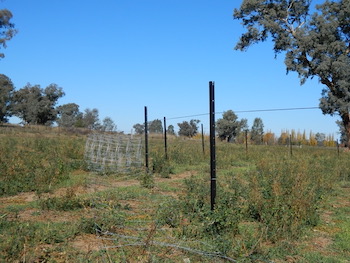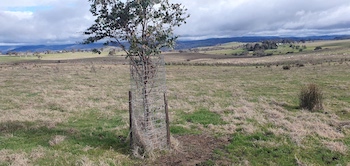Over the last four years Yass Landcare and more recently Gunning Landcare had been rolling out mesh tree guards to protect the planting of paddock trees from livestock. The Yass Paddock tree project has seen 1600 Paddock tree packages delivered and installed by participating landholders. The Trees – Eucalyptus were all locally grown in a regional Landcare nursery and are on our list of plants which we expect to thrive in a changing climate.
Landholders participating in this project have increased the number of Paddock tree packages which could be delivered through Landholder contributions. Below are some photos of protected paddock trees, several years after planting. Some of the photos demonstrate the importance of adding new trees- Eucalyptus into the landscape as the photos show large distances between existing paddock trees.
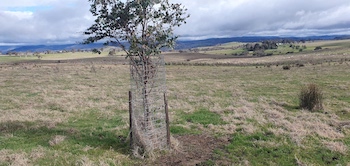 .
. 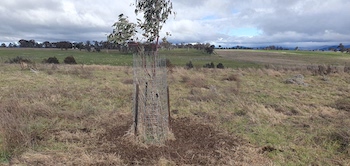
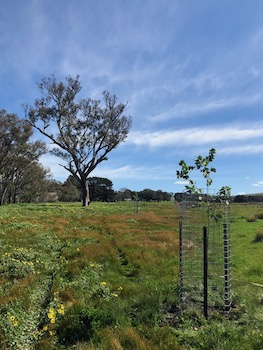 .
. 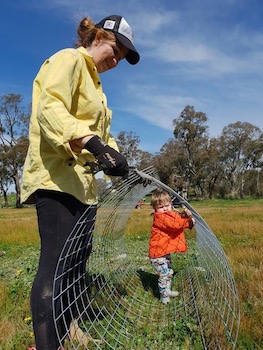 .
. 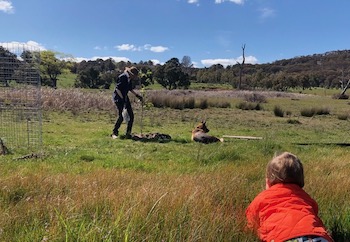
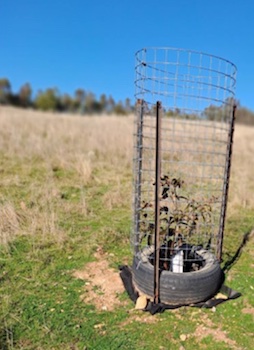
Proposed addition to the Paddock Tree model
In the past Yass Area Network was part of a larger revegetation project lead by Damon Oliver, NSW Department of Planning and Environment, to provide new habitat and food sources for Superb Parrots which migrate through this region. In that project the concept of fencing off mature paddock trees in a circle several metres from the tree was introduced. This approach enabled the planting of a range of understory plants around the mature paddock tree. This enabled several beneficial things:
- such as bringing in the insect eating birds which are often the ones that help decrease amounts of dieback by small birds leaf gleaning pests like lerps etc;
- the introduction of new shrubs also provides extra habitat and food resources for our wildlife. The absence of shrubs in our landscapes is now less than 5-10% of our Box Gum Grassy Woodlands thus setting up new shrub islands is critical.
- as well as being a wildlife habitat and food source, this type of tree protection and planting reduces soil compaction from stock, increase soil biota, improve symbiotic interactions between roots etc, and overall boost the trees' health significantly.
Building a tree circle is easy and the 4 images in sequence show you how simple the process is – by using “maxloc” or "stiff stay” netting fencing which doesn’t concertina and with a heavier gauge wire top and bottom there is no need for single wires. The netting can simply be attached top, middle and low down onto each iron post with tie wire. Note the iron posts leaning out a little and the netting is loosely strained with strainers.
Thus ideas from one region can be readily adopted and made to work in other regions – you just need to be open to new ideas and use local regional plants. So in the future our regional Landcare groups will add this mode of planting to our revegetation tool case to create new biodiverse hot spots to assist wildlife migration through the landscape – are you open to that idea?
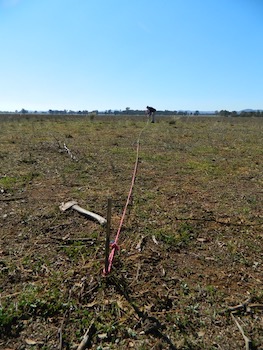 .
. 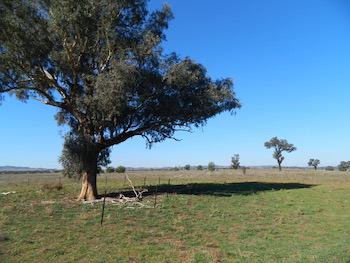 .
.
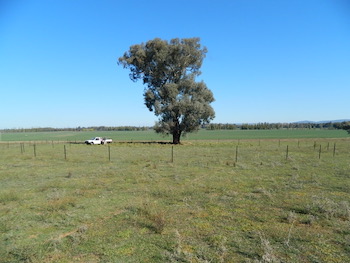 .
. 